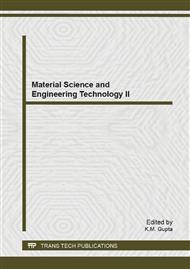p.321
p.327
p.333
p.338
p.343
p.349
p.359
p.364
p.368
Prediction of the Remaining Service Life of Superheater and Reheater Tubes in Coal-Biomass Fired Power Plants
Abstract:
Burning biomass in power plants is believed to result in severe fireside corrosion of superheater/reheater tubing and cause unexpected early failures of tubes. Morover, higher operating temeprtures and pressures (to increase the boiler efficiency) will also increase the risk of fireside and steamside oxidation damage to the boiler tubing and lead to shorter component lives. Predicting the remaining service life of superheater/reheater tubes in coal-biomass fired power plants is therefore an important aspect of managing such power plants. The path to this type of failure of tubes involves five processes: combustion, deposition, fireside corrosion, steam-side oxidation, and creep. To fully understand the impact of new fuel mixes and changing operating conditions on such failures, an integrated model of all of these processes is required. This work has produced an integrated set of models and so predicted the remaining life of tubes based on the conceptual and mathematical frameworks developed.
Info:
Periodical:
Pages:
343-348
Citation:
Online since:
December 2013
Authors:
Price:
Сopyright:
© 2014 Trans Tech Publications Ltd. All Rights Reserved
Share:
Citation:


